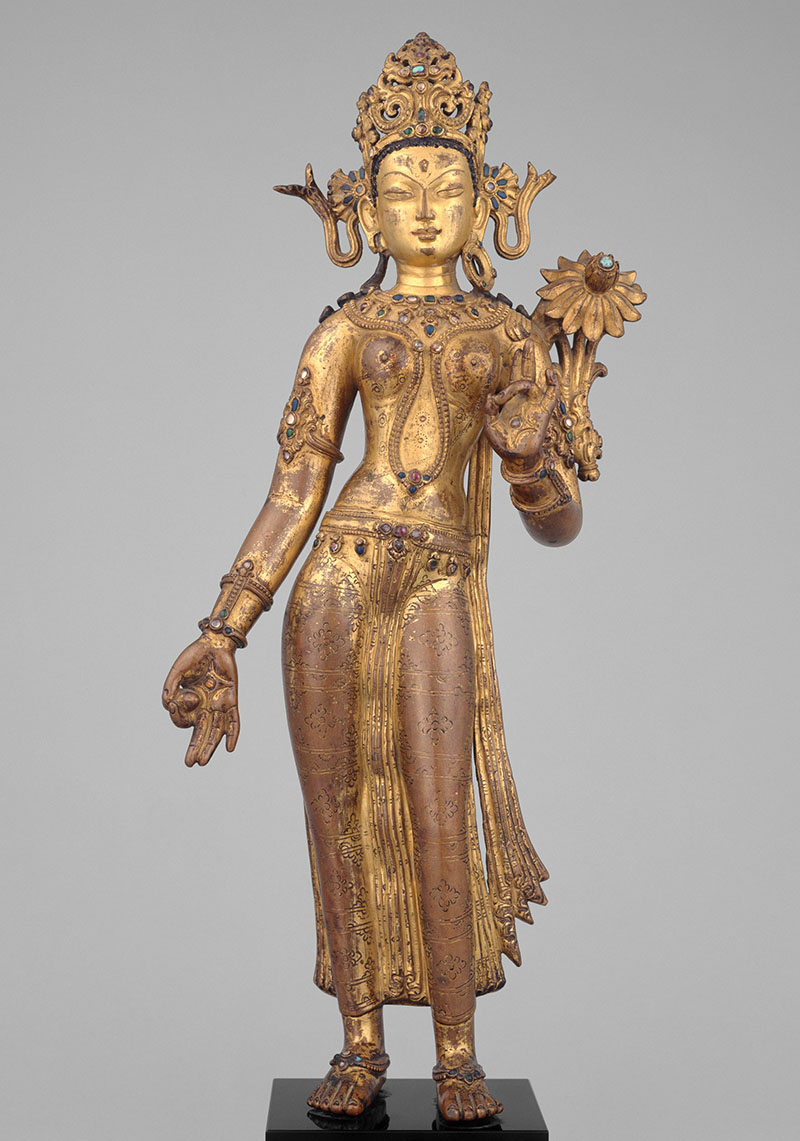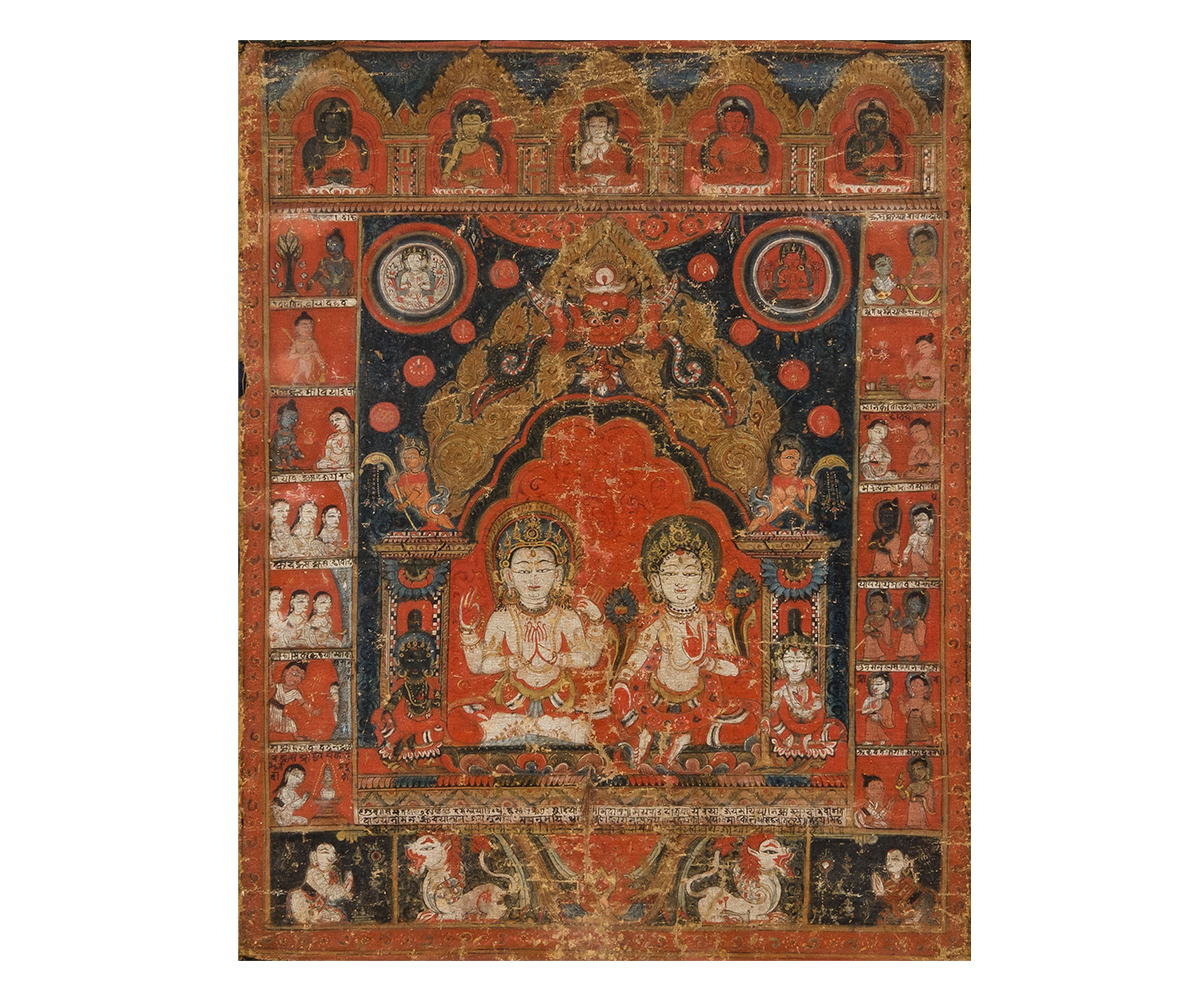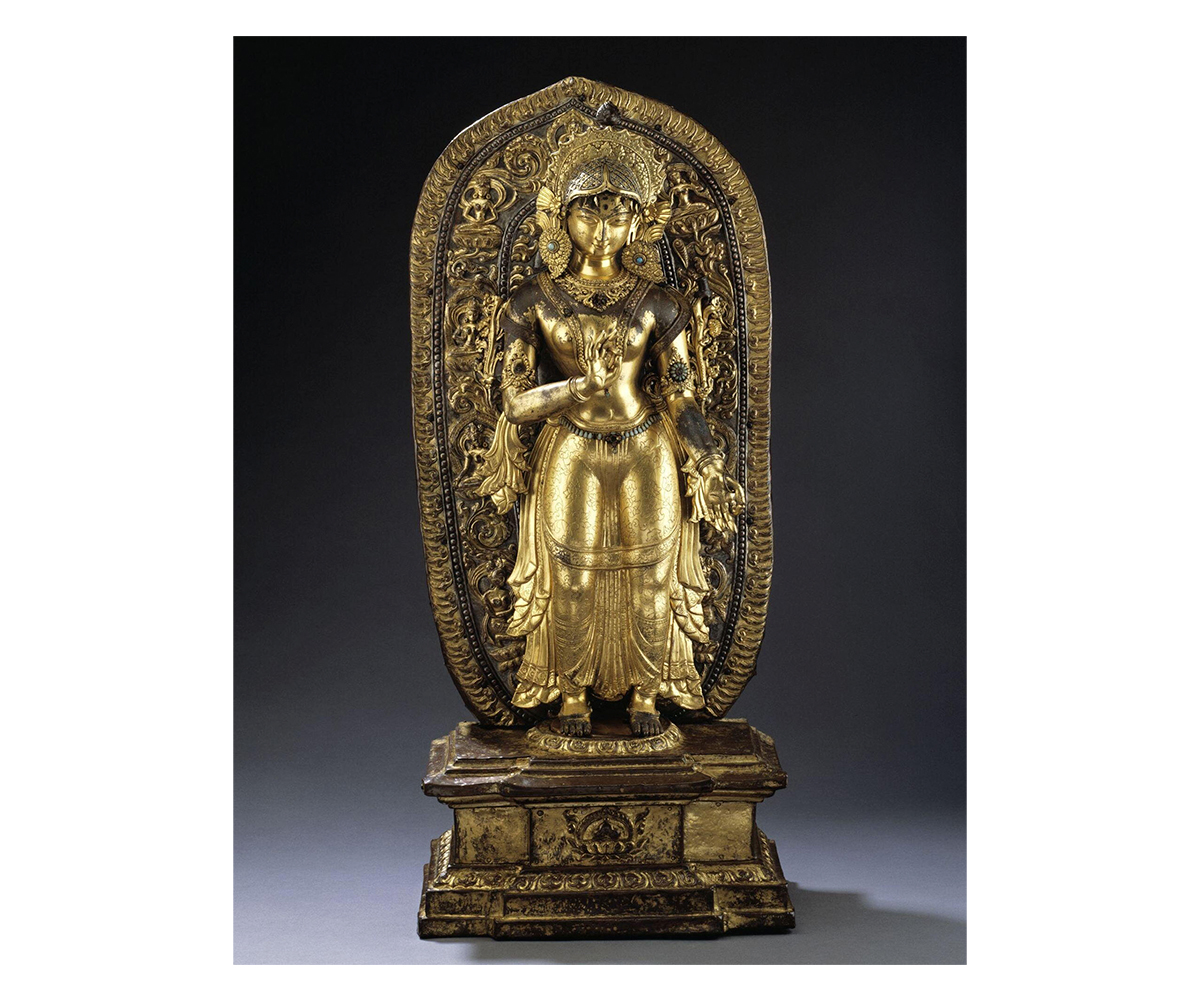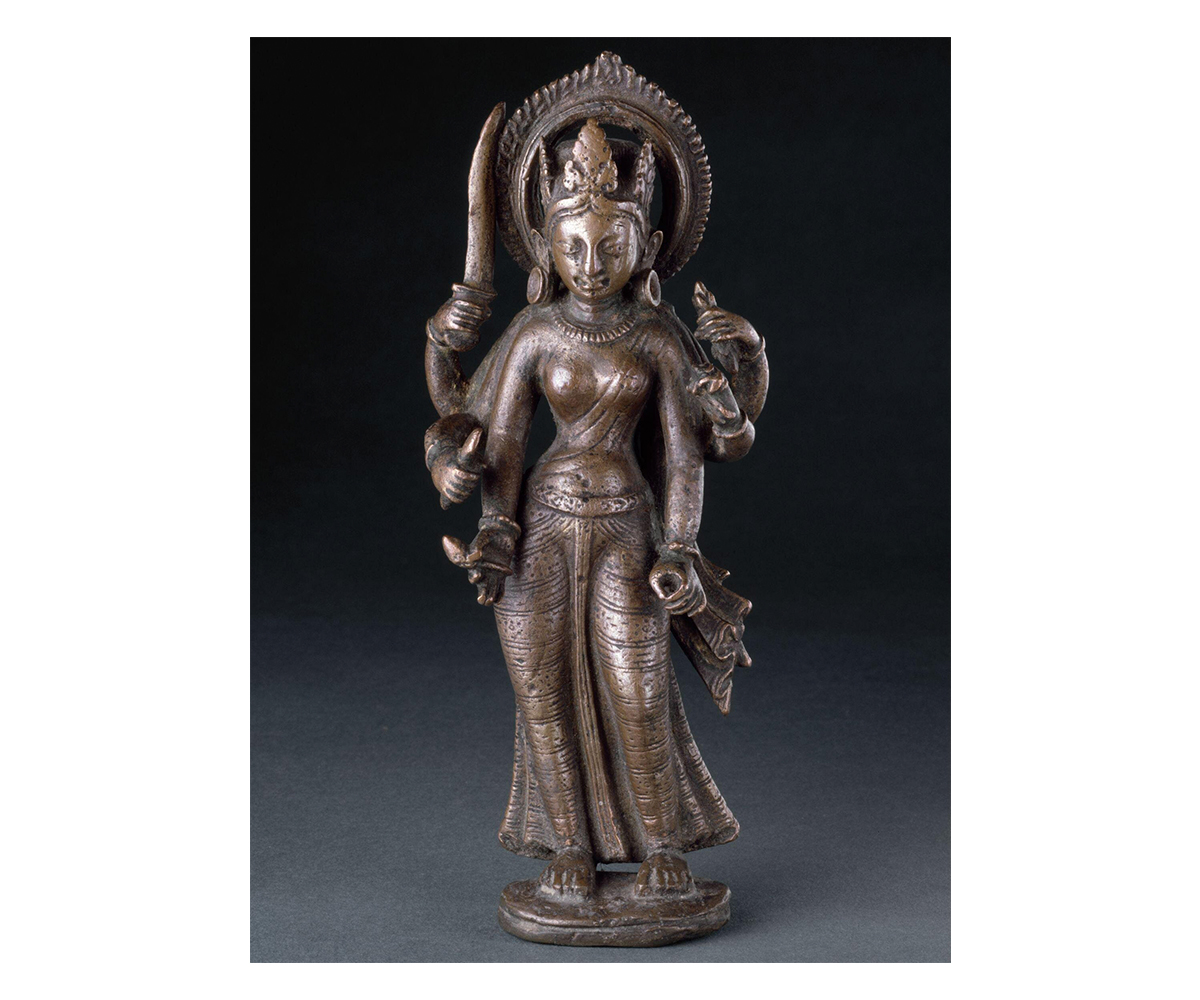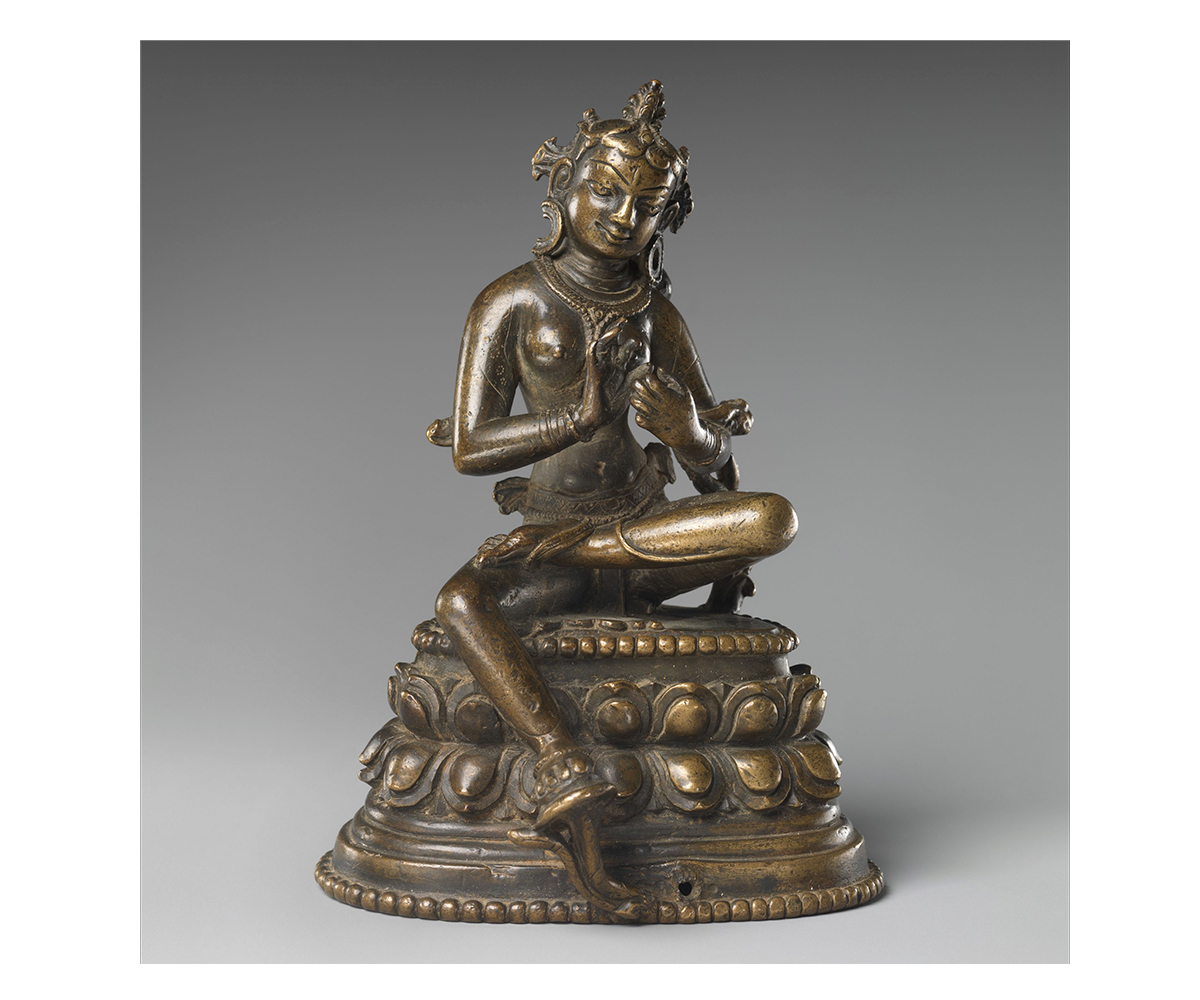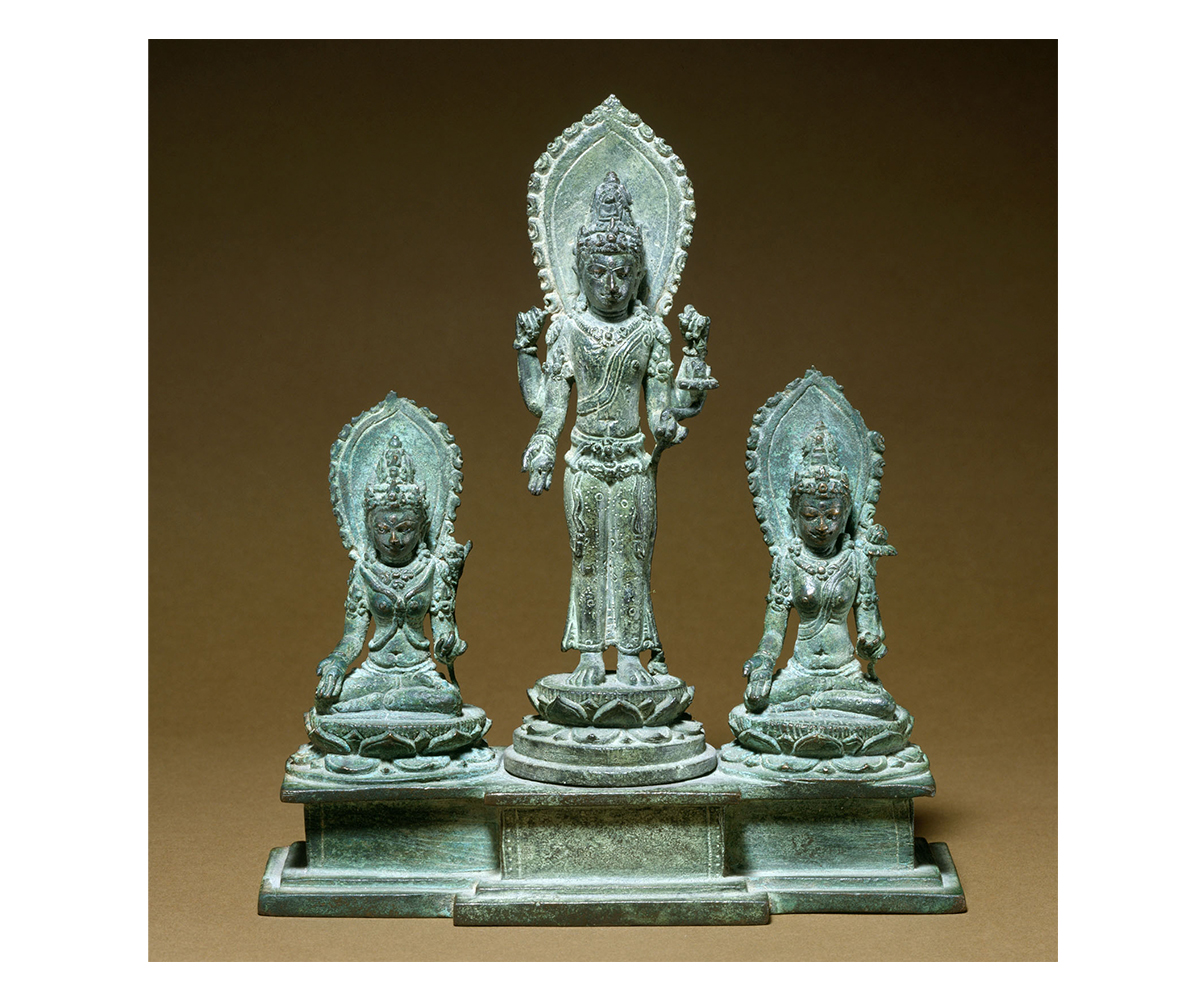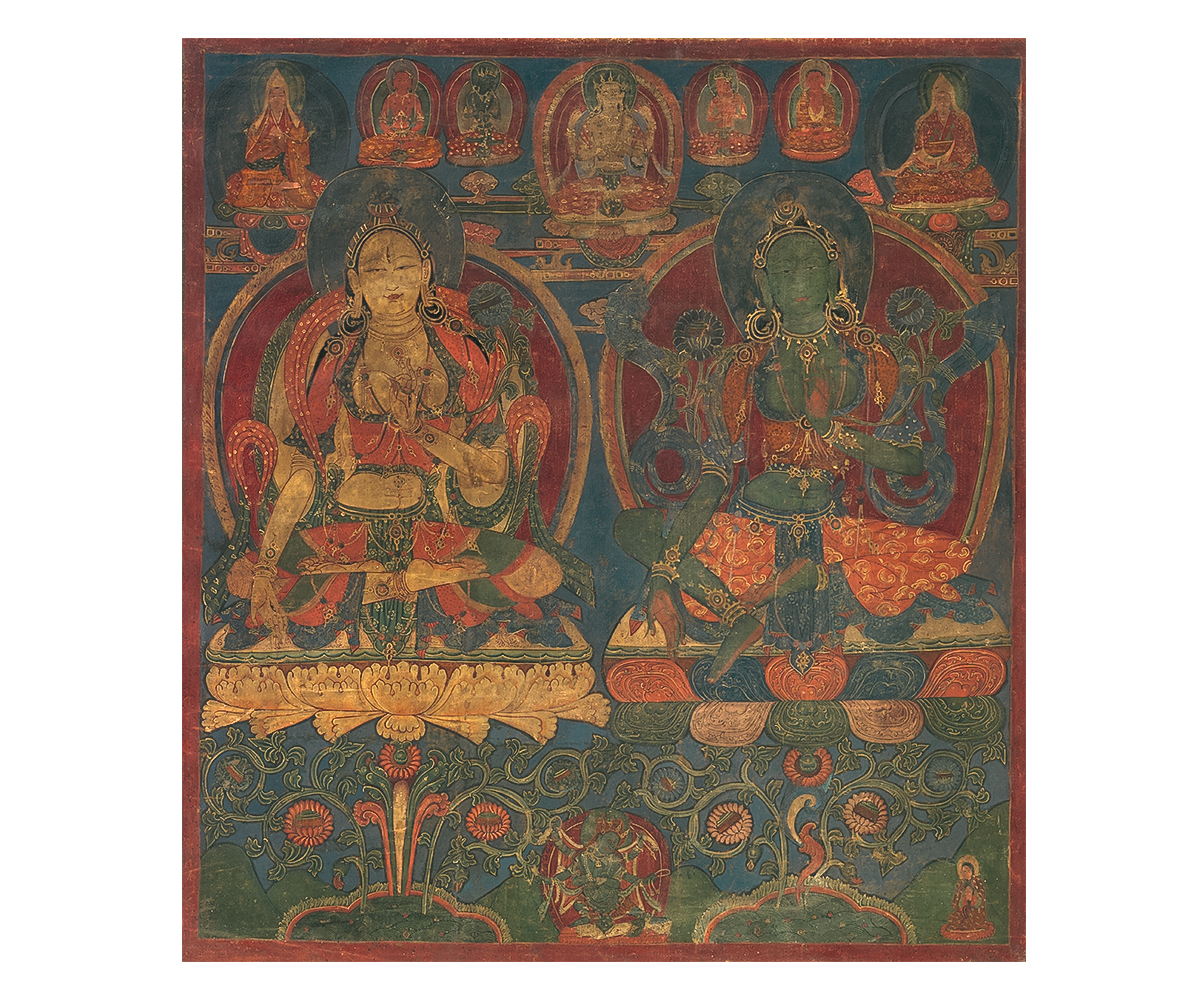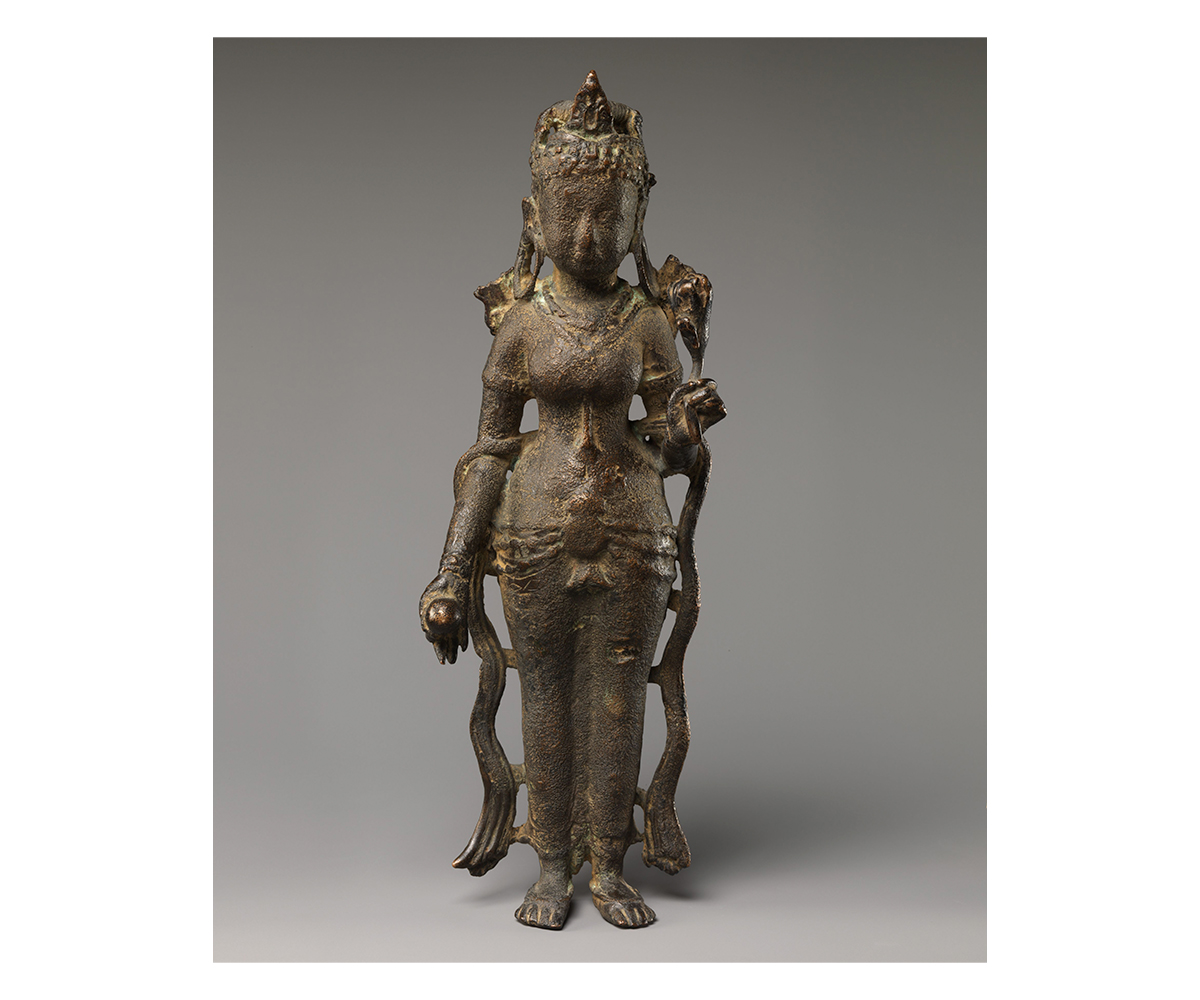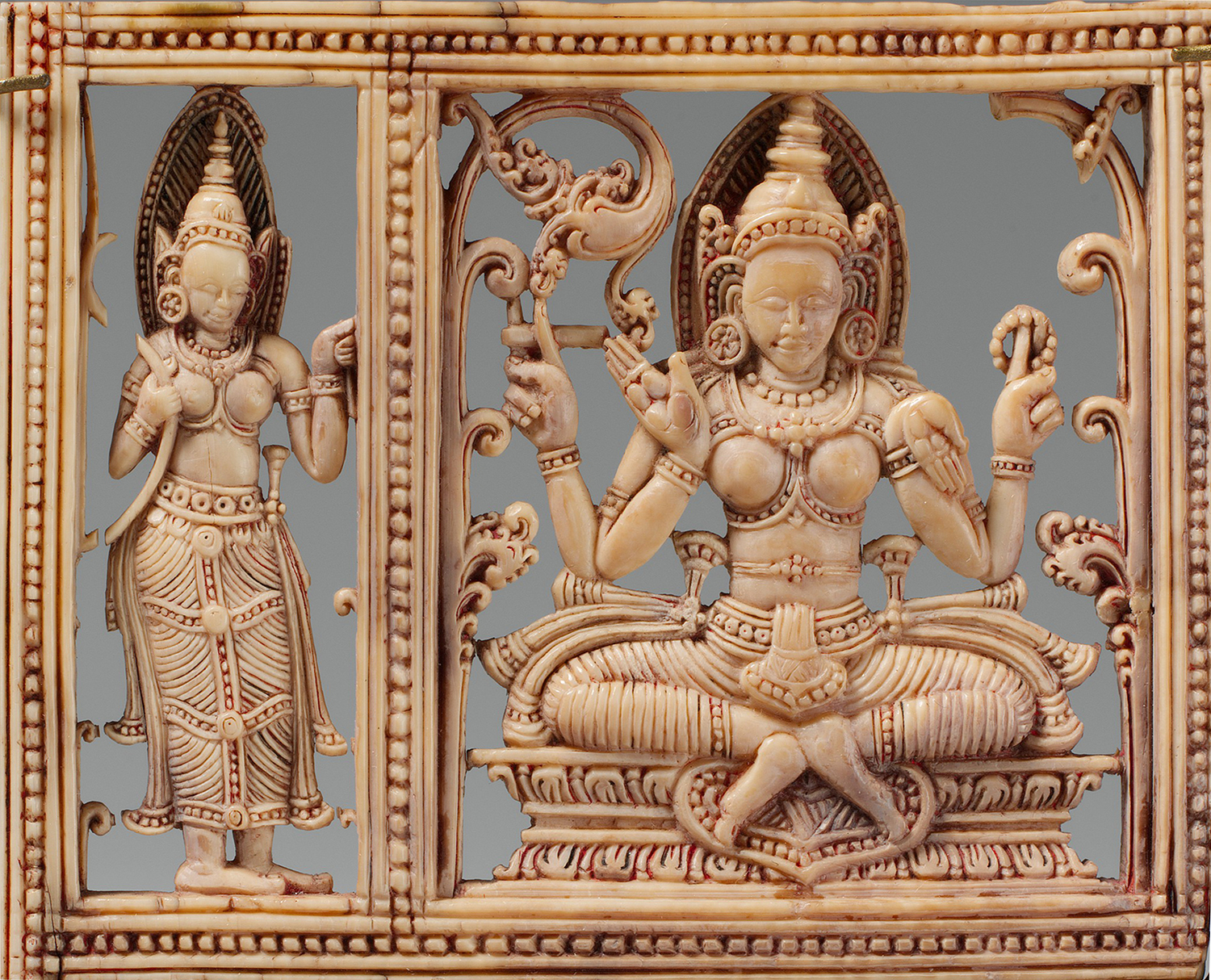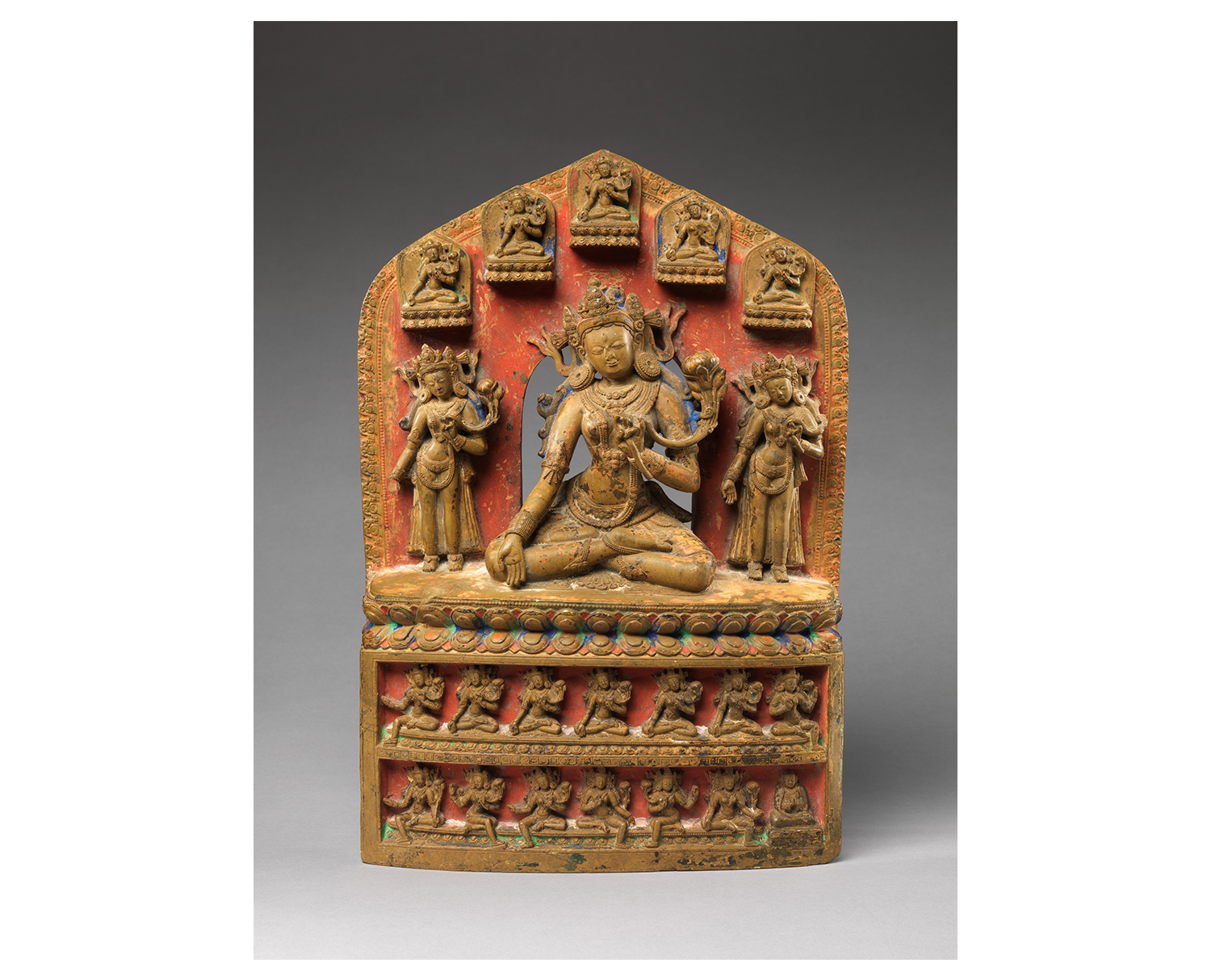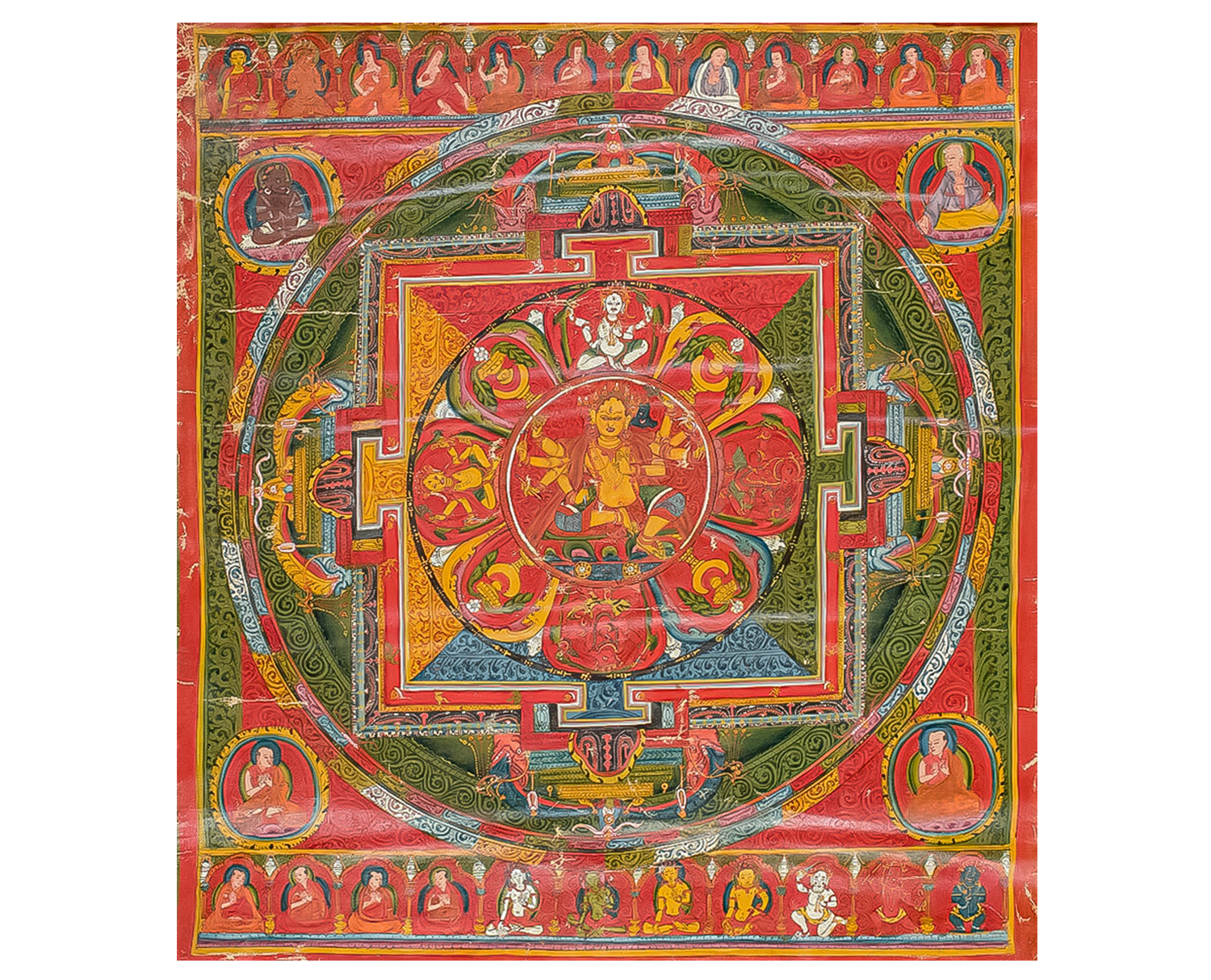ARTICLE
Tara in Buddhism
One of the earliest references to Tara occurs in the mid-seventh century CE text Vasavadatta, a romantic tale composed in Sanskrit by Subandhu, and the earliest reference to her worship occurs in an inscription dated to 778 CE from Java, present-day Indonesia. Numerous texts referring to Tara worship and outlining iconography and religious context for her were composed in the seventh and eighth centuries CE. Later texts such as Tarantha’s (1575–1634) Golden Rosary and Twenty-One Praises of Tara played a significant role in establishing the cult of Tara in Tibet.
In some early representations, Tara is depicted as an attendant to Avalokiteshvara. In reliefs dating to the sixth century CE at the caves of Kanheri and Nalanda, for example, the figure of Avalokiteshvara is accompanied by female figures one of whom may be identified as Tara, as she is seen holding a lotus flower, a common motif in later imagery depicting the goddess. The antiquity of this representation may also suggest Tara’s long-sustained prominence in Buddhist worship.
Tara’s association with Avalokiteshvara might be explained by a popular Tibetan origin myth, where she is believed to have appeared either from Avalokiteshvara’s left eye or from a pool of tears shed by him when faced with the world’s suffering. Another story rooted in Tibetan mythology views the wives of Tibetan ruler Songtsen Gampo — the Chinese princess Wen Cheng and Nepalese princess Bhrikuti Devi — as incarnations of White Tara and Green Tara respectively.
By the mid-seventh century, Tara assumed prominence in iconographic representations and was depicted alongside other deities such as Chunda, Bhrikuti and Jhambala, as seen in the Buddhist carvings at Ellora. By the eighth century Tara became a central figure, flanked by attendants of her own. This rise in popularity is substantiated by a large number of bronze and stone statuettes depicting Tara, excavated at sites such as Nalanda and Vikramshila and dated to the ninth and tenth century CE. Bronze images dating to the seventh and eighth centuries CE depicting Tara as a bodhisattva have also been found in Sri Lanka.
Amongst Tara’s many manifestations, of particular significance is Ashtamabhaya Tara — a liberator from the eight great fears, namely lions, elephants, snakes, thieves, drowning, fire, captivity and evil spirits. In this form, she is depicted as a central figure, either standing or seated, often green or white in colour, styled in the manner of a peaceful Avalokiteshvara. She is set against a natural landscape, protecting devotees from the eight great fears and surrounded by her eight manifestations as floating deities. The numerous smaller versions of Tara surrounding her central figure promote the idea that the goddess is omnipresent. Some of the earliest representations of Ashtamabhaya Tara, found at Ellora and Ratnagiri, are dated to the seventh to tenth century period.
Another prominent representation of the deity is as the ‘seven-eyed’ or Saptalochana Tara. A white-complexioned form, she is depicted with eyes on each of her palms and the soles of her feet, and an additional eye on her forehead to indicate her wisdom.
Tara’s minor manifestations, with their diverse iconographic aspects, are depicted across mediums such as paintings, thangkas, reliefs and sculpture. Mahattari Tara takes a meditative posture and is depicted cross-legged. Vashyadhikara Tara sits in bhadrasana, a royal posture with her legs extending downwards. As Varada Tara, she often appears along with Ashokakanta Marichi, Mahamayuri, Gajata and Janguli. The wealth-bestowing Tara with four arms, attended to by eight Taras and female door guardians is known as Dhanada Tara. When depicted with a golden hue, she is known as Rajashri Tara. The Yellow Chintamani Tara stands beneath a bejewelled tree, bestowing the wish-granting gem Chintamani. A relatively popular minor form of Tara is Vajra Tara, depicting the deity as a yellow eight-armed figure capable of magic.
Scholars have noted iconographic similarities between Tara and Lakshmi, and both feature across Hindu and Buddhist representations. Both figures are enthroned on lotus flowers with lotus footstools and draped in regal garments. The two deities share attributes that may be associated with fertility and abundance. Lakshmi’s associations with water and its generative qualities may be related to the cult of the benign Tara who is tasked with guiding people across the metaphorical sea of danger and suffering towards liberation.
The Drolma Lhakhang monastery in Tibet is the earliest extant temple dedicated to Tara. Established in the eleventh century during the lifetime or shortly after the death of Atisha (982–1054 CE), it is still a site for worship and contains its original set of gilt images of the Twenty-One Taras. In Nepal, a fourteenth-century effigy of White Tara is housed in the Tara Nani courtyard complex, an important site of Buddhist Tara worship located within the premises of the Ithum Baha, a Buddhist monastery in Kathmandu. The site marks the spot where Tara is believed to have appeared from Tibet to teach the Dhamma. Tara also continues to be revered with the creation of thangkas and statues — in production since the twelfth and thirteenth centuries — which in Tibet and Nepal are believed to be animated and endowed with the ability to speak and perform miracles.
Bibliography
Behrendt, Kurt. Tibet and India: Buddhist Traditions and Transformations. New York: Metropolitan Museum of Art, 2014.
Beyer, Stephan. The Cult of Tārā: Magic and Ritual in Tibet. Berkeley and Los Angeles: University of California Press, 1978.
Kawamura, Leslie S. “Tārā.” In Encyclopedia of Religion, edited by Lindsay Jones, 2nd ed., 9000–9001. Detroit: Macmillan, 2005.
Kinsley, David R. Hindu Goddesses: Visions of the Divine Feminine in the Hindu Religious Tradition. Berkeley: University of California Press, 1986.
Landesman, Susan A. The Tārā Tantra: Tārā’s Fundamental Ritual Text (Tārā-Mūla-Kalpa). New York: The American Institute of Buddhist Studies and Wisdom Publications in Association with the Columbia University Center for Buddhist Studies and Tibet House US, 2020.
Shaw, Miranda Eberle. Buddhist Goddesses of India. New Jersey: Princeton University Press, 2015.




